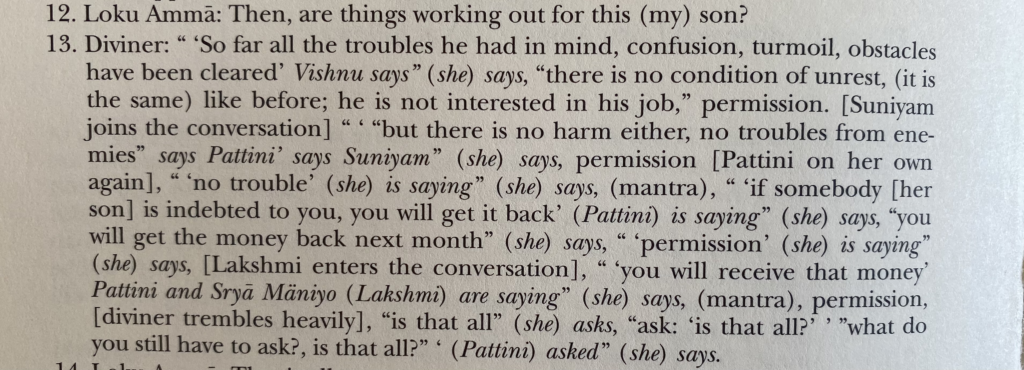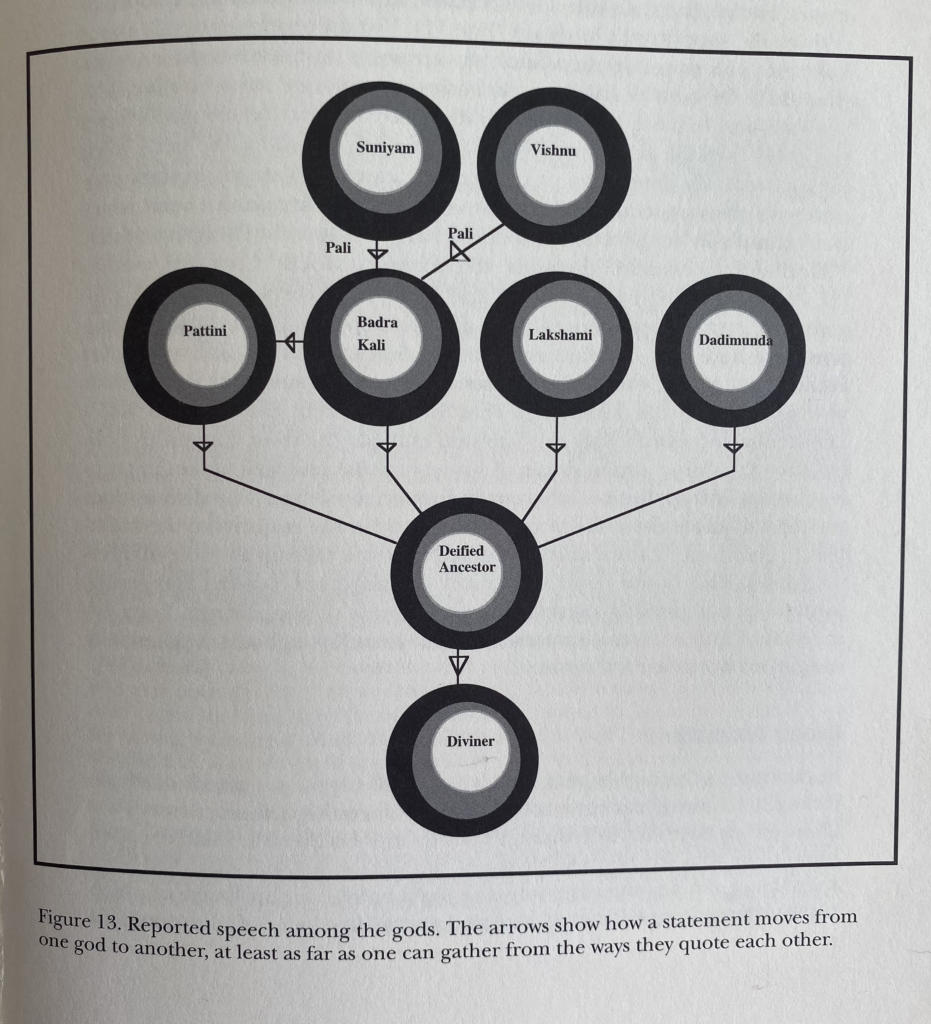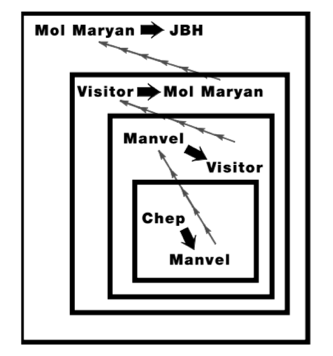
As we quote the voices of others we re-animate their speech. The words they used, their expressions are brought to life, as we take up the role of animators of bygone voices. In this way our own voices sometimes become a tapestry of the voices of others. The way others are embedded within our own discourse varies from one culture to another. In some, the original intonation, and words chosen by an author remain intact. In other cultures, voices of the past become imbued with the here and now, the intonation of an animator, their way of putting things. Then paraphrase prevails, and the meaning of an original utterance is expressed by using different words. In this blog I focus on one end of the spectrum, the direct, almost word-for-word citation of the voices of other people. Through animation our way of speaking becomes laminated.

TRANSCRIPT OF MULTIPLE EMBEDDED QUOTES (Argenti-Pillen 2003: 144)
It is rather easy to imagine such lamination when we consider the quotation of one speaker, one voice. More than 20 years ago I began research on reported speech. One of the chapters I wrote is called ‘She said that he had said that…’. This is a quotation within a quote, within another quote. This could be rephrased as ‘I quote her and she quotes him’. I now propose to visualise this as a series of Russian dolls, nested dolls – the voices of others become nested into one another. The example I presented in 2003 came from Southern Sri Lanka and was spoken in Sinhalese. In those days I represented this form of speech as both a transcript of a recording of the speech of a diviner, together with a diagram showing the chain of citation among the quoted deities.

DIAGRAM OF MULTIPLE EMBEDDED QUOTES (Argenti-Pillen 2003: 145)
To pick the ancient metaphor of language as woven material, discourse appears as a woven pattern of voices, including those of others, the voices that are quoted. A series of embedded quotes, like nested dolls within a 3D fabric, is not uncommon. To document this, I present another example from the literature based on a language unrelated to Sinhalese, Tzotzil (a Mayan language). The image below was constructed on the basis of a Zinacantec narrative from Chiapas in Mexico. What I am interested in here is the visual representation of the architecture of such a ‘stacking doll’, of the organisation of ‘figures’ within discourse. The multiple embedded quotes concern the words of salient others in self-presentation; the voices of Chep, Manvel, Mol Maryan and others articulated by a single narrator. Here an angry, shouted insult was quoted and re-told over two decades. Such a quote reflects the character of a by now antiquated interlocutor and surfaces as a narrated, verbal icon of his personality.

DRAWING OF MULTIPLE EMBEDDED QUOTES (Haviland 2005:92)
A final image for this blog comes from a chapter called ‘The voices of Don Gabriel’. This classic text is based on a recording of a story told by Don Gabriel on his death bed. He was the last speaker of Aztec/Nahuatl in San Lorenzo Almecatla, a town of about 800 people near Puebla in Mexico. Here, the ‘voice system’ is simply represented in table format, as a list of the 13 ‘figures’, the reported speech of others he wove into his story.

LIST OF ‘FIGURES’ (Hill 1995:117)
In such instances contemporary forms of speech seem like a slow curdle of voices, sometimes spanning generations or including ancestral voices and divinities. Within a woven fabric of language, a heard-but-not-seen web of order is constructed. Upsetting scenes from the past, or the blunt, almost unpalatable insights of forebears become wrapped into sequences of quotes. Citation here almost feels like the threads of a chrysalis, an ethereal, linguistic structure akin to a nested doll?

References
Argenti-Pillen, Alex (2003). ‘She said that he had said that…’ The use of reported speech. In: Masking Terror: How women contain violence in Southern Sri Lanka. (p.133-156). Philadelphia: Pennsylvania University Press.
p. 144- 145
Haviland, J. (2005). ‘Whorish Old Man’ and ‘One (Animal) Gentleman’: The Intertextual Construction of Enemies and Selves. Journal of Linguistic Anthropology, 15(1)
p. 92
Hill, J. (1995). The Voices of Don Gabriel: Responsibility and Self in a Modern Mexicano Narrative. In: D. Tedlock, and B. Mannheim, eds., The Dialogic Emergence of Culture. Urbana & Chicago: University of Illinois Press, pp. 97-147.
p.117
Sources images
Image 1
https://pixabay.com/photos/matryoshka-doll-doll-souvenir-6039267
Image 6
https://pixabay.com/photos/chrysalis-macro-close-up-cocoon-1742202